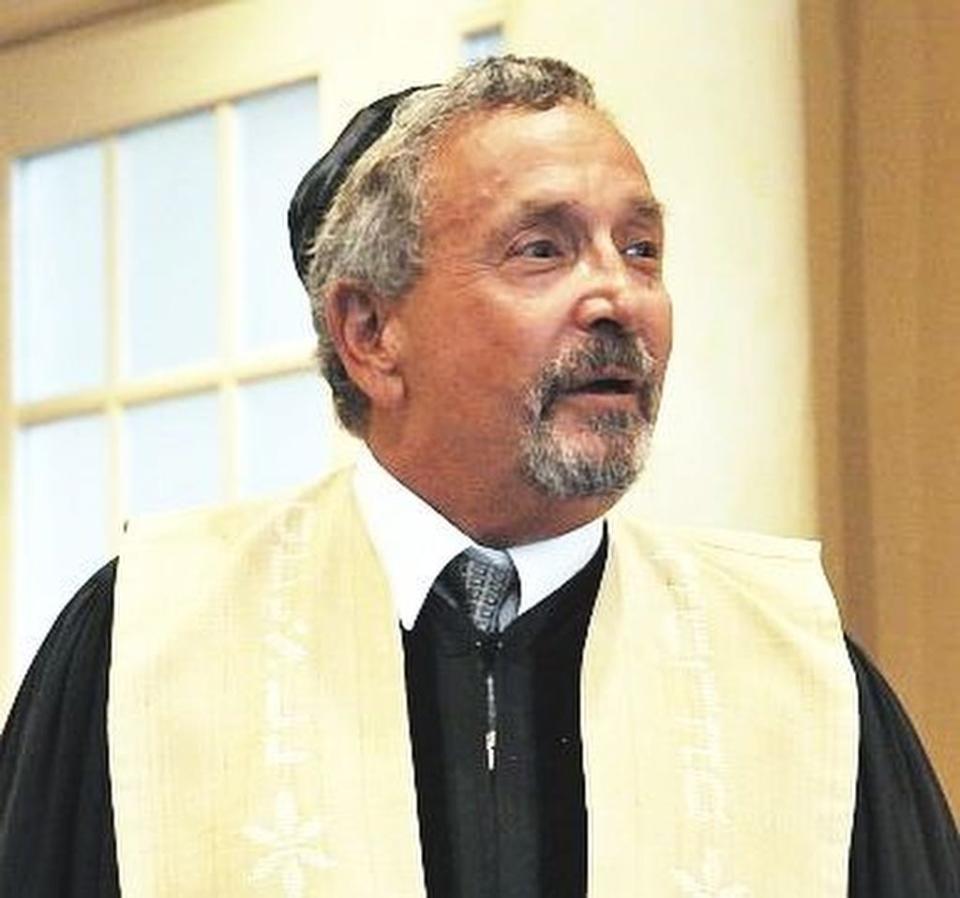Jewish New Year began at sunset Friday
We Jews who maintain a connection to our religious heritage welcomed the new year 5784 at sunset Friday, September 15, the night of the new moon. Many would participate in synagogue worship that evening, the following morning, and, traditionally, also the next evening and morning. The Jewish New Year’s holiday is called Rosh Hashanah, “the beginning of the year.” The designation 5784 reflects the medieval calculation of the numbers of years since creation.

The primary ritual on Rosh Hashanah is the sounding of the shofar, the ram’s horn, to announce the beginning of the month containing our most sacred holiday, Yom Kippur, the Day of Atonement, 10 days after Rosh Hashanah. Four days after Yom Kippur comes the eight-day Feast of Tabernacles, Sukkot, the most prominent of the three biblical “Pilgrimage Festivals.”
It’s a lot, sort of like having Christmas, Easter and Thanksgiving just 14 days apart! It can get very hectic for synagogue leaders who want to put the best face forward for the large influx of worshippers who are rarely if ever are seen the rest of the year. I imagine it’s much the same for churches preparing for Christmas and Easter. And similarly, preparing large Rosh Hashanah meals for gatherings of extended families and friends keeps everyone busy at home.
Rosh Hashanah and Yom Kippur together are traditionally called the “Yamim Nora’im," “The Days of Awe,” although they are now more commonly known as the “High Holidays,” a term borrowed from the German "höchster Feiertag" by German Jewish immigrants to the United States in the mid 19th Century.
However, a more literal translation is “Days of Dread,” since for observant Jews it is imagined to be a time of Divine judgment when every living creature’s fate is decreed.
That is why another name for Rosh Hashanah is “Judgment Day.” It is assumed that everyone’s verdict is the same: guilty, since none of us has yet achieved the full measure of what we were meant to be. And much like Earthly courts, the handing down of the verdict is separated by a period of time after the sentencing, during which time the convicted person appeals for leniency and tries to mitigate the severity of the punishment. That is what we do during the “10 Days of Repentance” between Rosh Hashanah and Yom Kippur. By prayer, repentance, righteous giving, asking for and offering forgiveness from each other, and trying to set things right, we hope to “avert the stern decree” on Yom Kippur.
This is one reason we refrain from food and drink, among other things, from sunset to sunset on the Day of Atonement. It is a sign of our contrition, remorse and repentance before the heavenly gavel is lowered. All in all, the religious sentiment of these Days of Awe is that our lives are hanging by a thread.
Now this part is the important part: Jewish New Years is not simply new years for the Jews. In our sacred imagination all that live are judged at this time, not just Jews. And so our prayers are not merely for ourselves as individuals. The language of our prayer is consistently “We” and “Us,” not “I” and “Me.” We are praying for the world and everyone in it, including you, whether you know it or not (and now you do)!
I know you didn’t ask us for this and may even feel that it is not necessary, but on these “Days of Awe” we are also going to bat for you because we are all in this life and this world together, right?
But you don’t have to thank us because we believe we are fulfilling a divine commandment, what we call a “mitzvah.” However, it would be nice to great your Jewish friends this week by saying “lshanah tovah” -- “for a good year.” They’ll be impressed at what a mensch you are! Look that up.
A “lshanah tovah” to you and yours too from me and my people. As we say, “may you be inscribed and sealed for a good year in the Book of Life”!
Bruce Diamond is Rabbi at the Fort Myers Community Free Synagogue.
This article originally appeared on Fort Myers News-Press: Jewish New Year began at sunset Friday

